Abstract
This review summarizes evidence that supports working hypotheses for the roles of boron in animal model systems. It is well established that vascular plants, diatoms, and some species of marine algal flagellates have acquired an absolute requirement for boron, although the primary role of boron in plants remains unknown. Recent research findings suggest that physiologic amounts of supplemental dietary boron (PSB) affect a wide range of metabolic parameters in the chick and rat model systems. Much of the current interest in boron animal nutrition began with the initial finding that PSB stimulates growth in cholecalciferol (vitamin D3)-deficient chicks, but does not markedly affect growth in chicks receiving adequate vitamin D3 nutriture. The finding suggests that boron affects some aspect of vitamin D3 metabolism or is synergistic with vitamin D3 in influencing growth. Vitamin D3 regulates energy substrate utilization, and current research findings indicate that dietary boron modifies that regulatory function. The concentration of circulating glucose, the most thoroughly investigated metabolite to date, responds to PSB, especially during concomitant vitamin D3 deficiency. In chicks, PSB substantially alleviated or corrected vitamin D3 deficiency-induced elevations in plasma glucose concentrations. The influence of vitamin D3 on cartilage and bone mineralization is mediated in part through its role as a regulator of energy substrate utilization; calcification is an energy-intensive process. There is considerable evidence that dietary boron alleviates perturbations in mineral metabolism that are characteristic of vitamin D3 deficiency. In rachitic chicks, PSB alleviated distortion of the marrow sprouts of the proximal tibial epiphysial plate, a distortion characteristic of vitamin D3 deficiency.(ABSTRACT TRUNCATED AT 250 WORDS)
Full text
PDF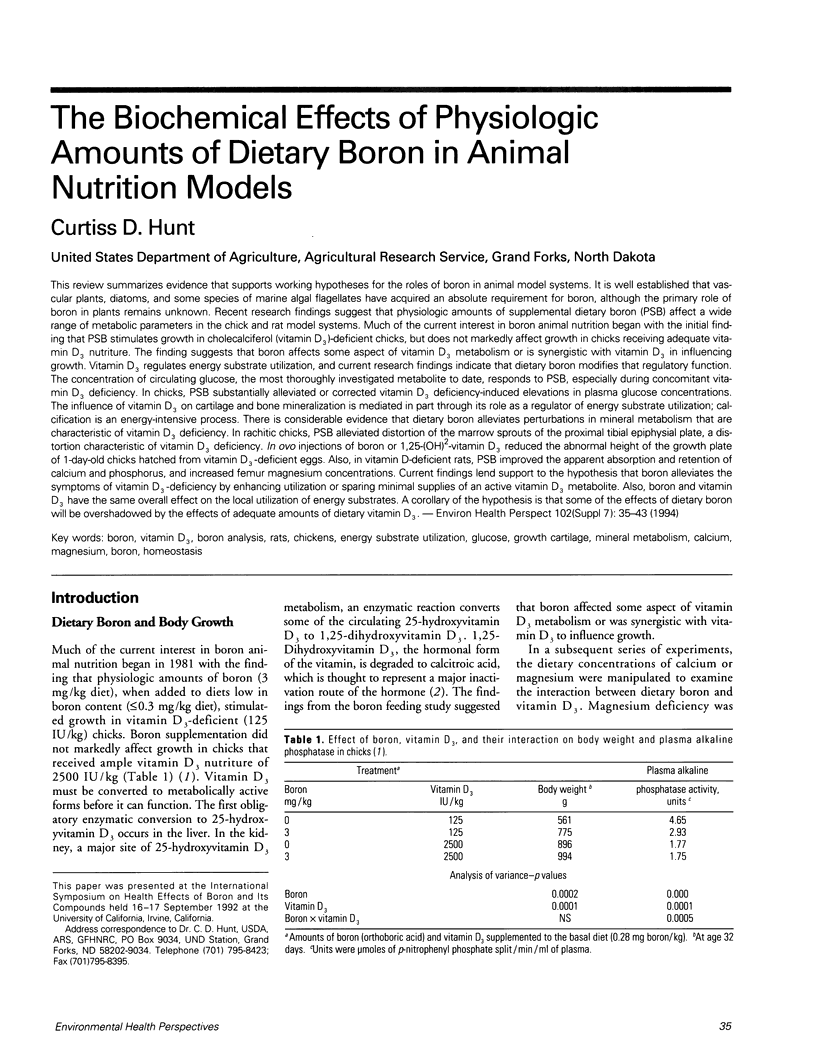
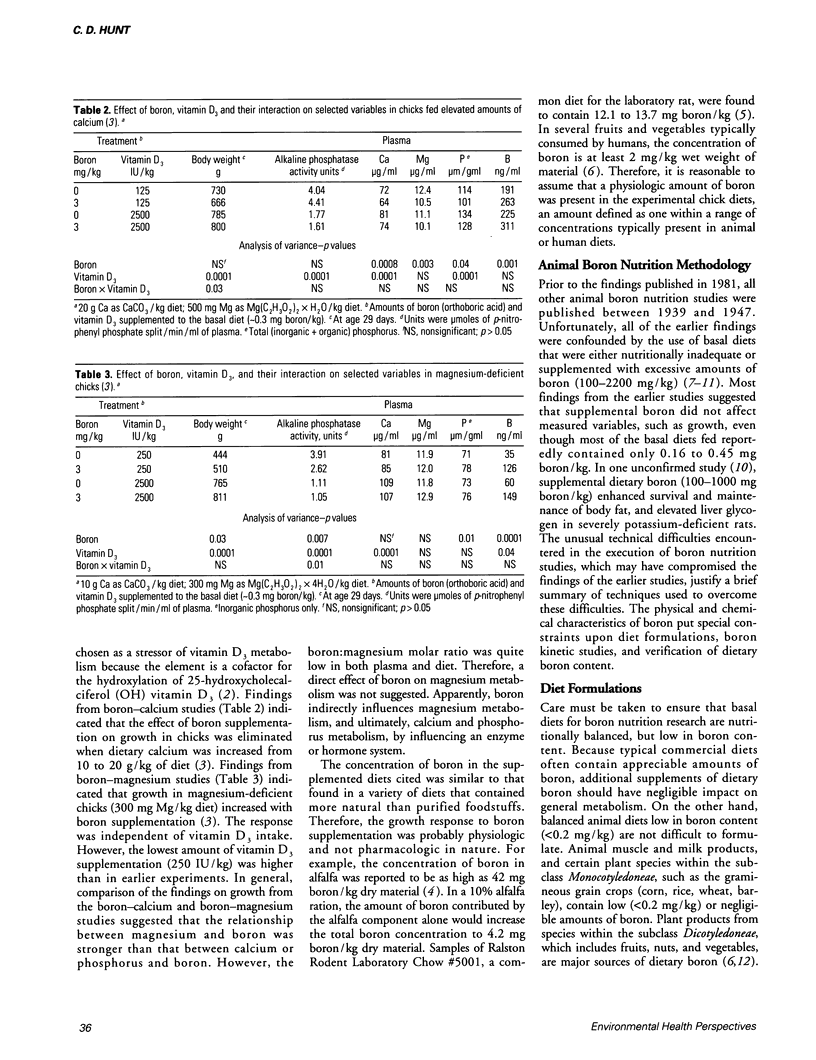
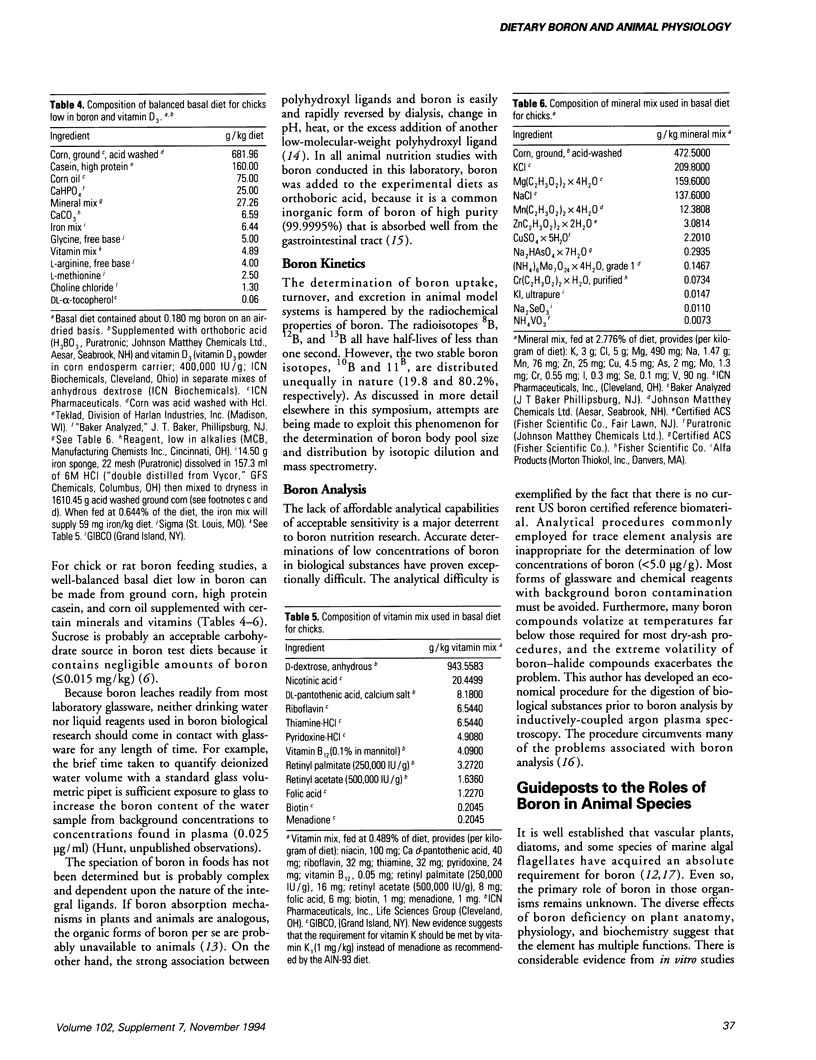
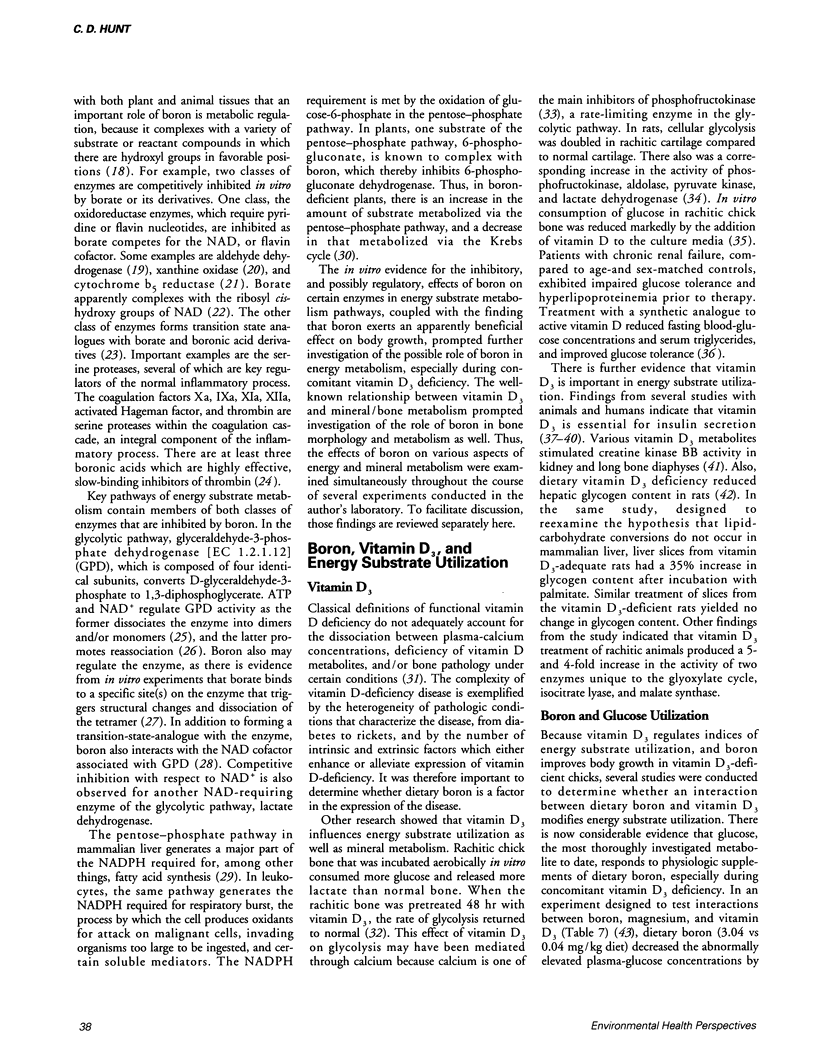
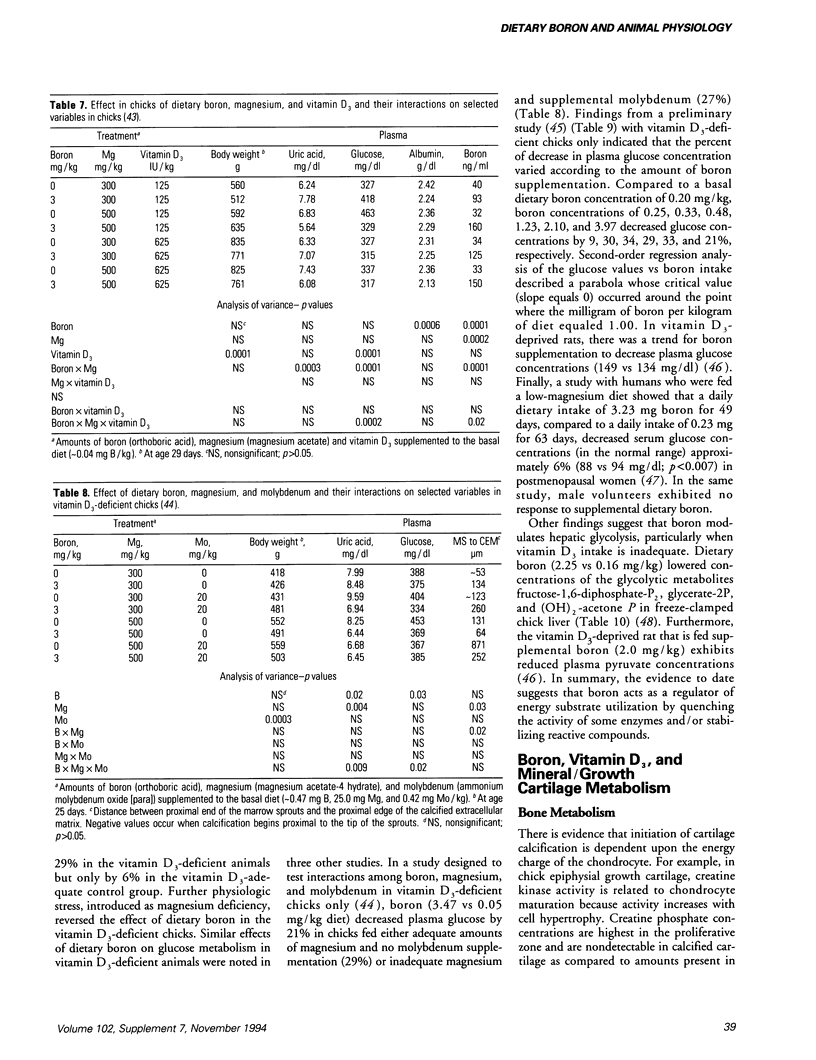
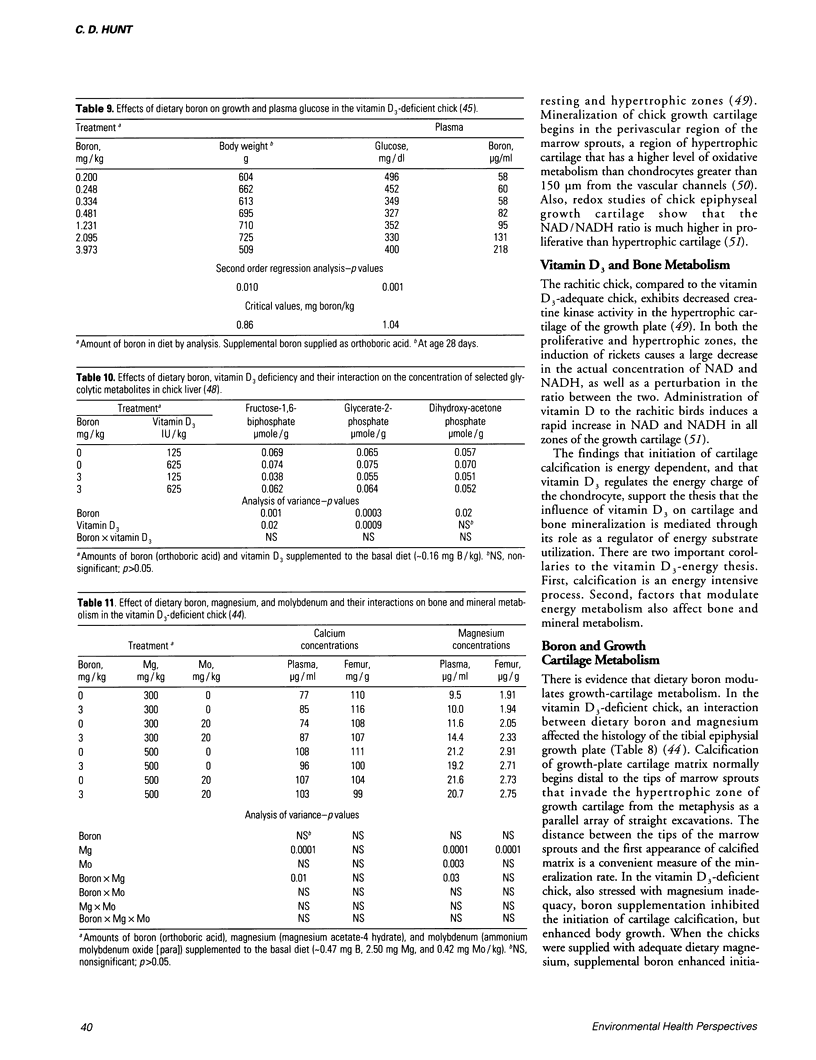
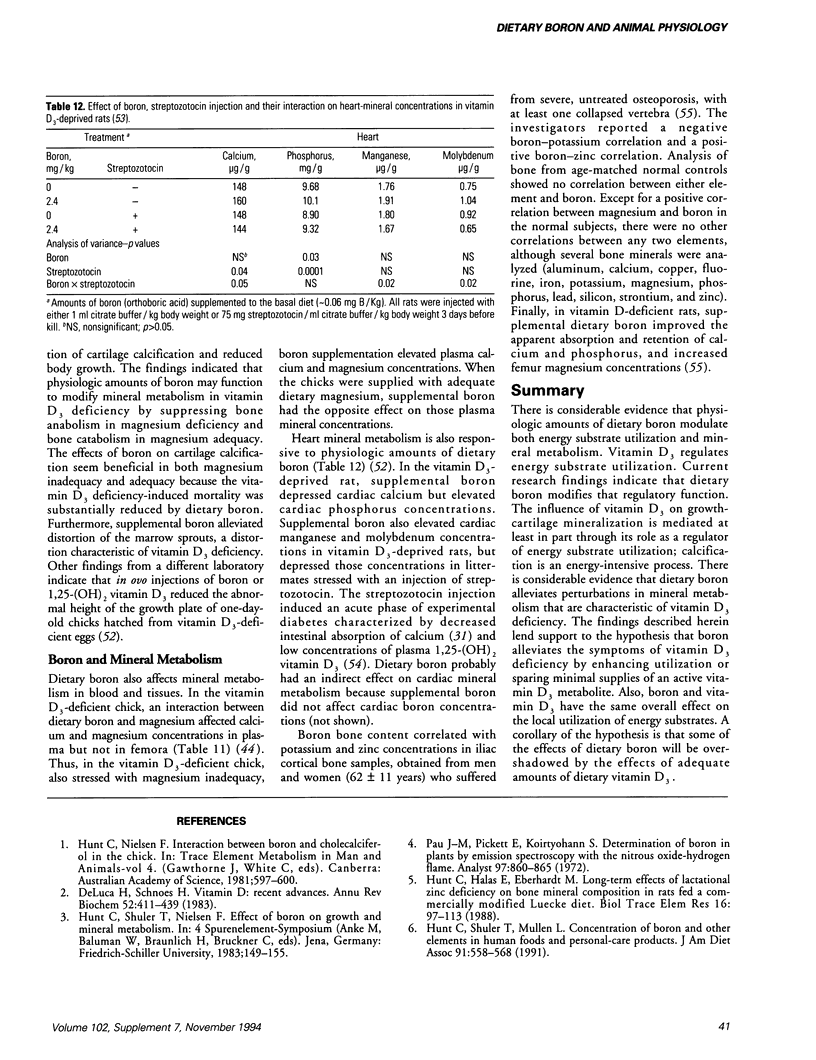
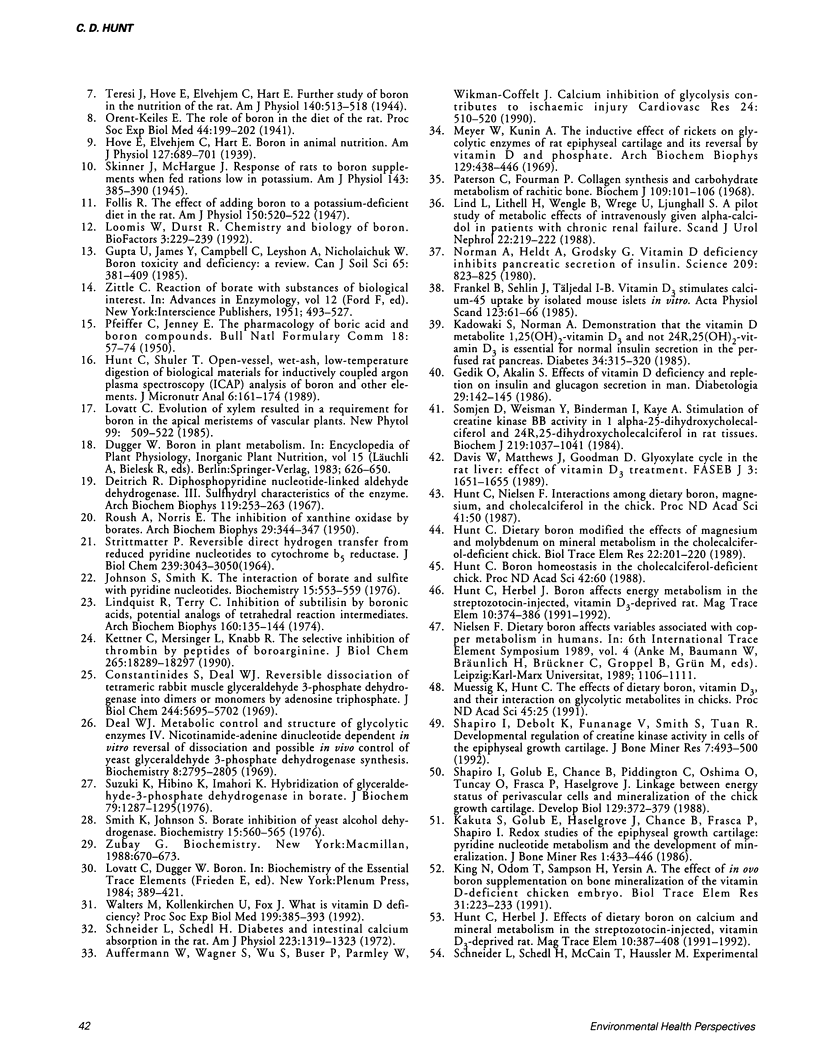
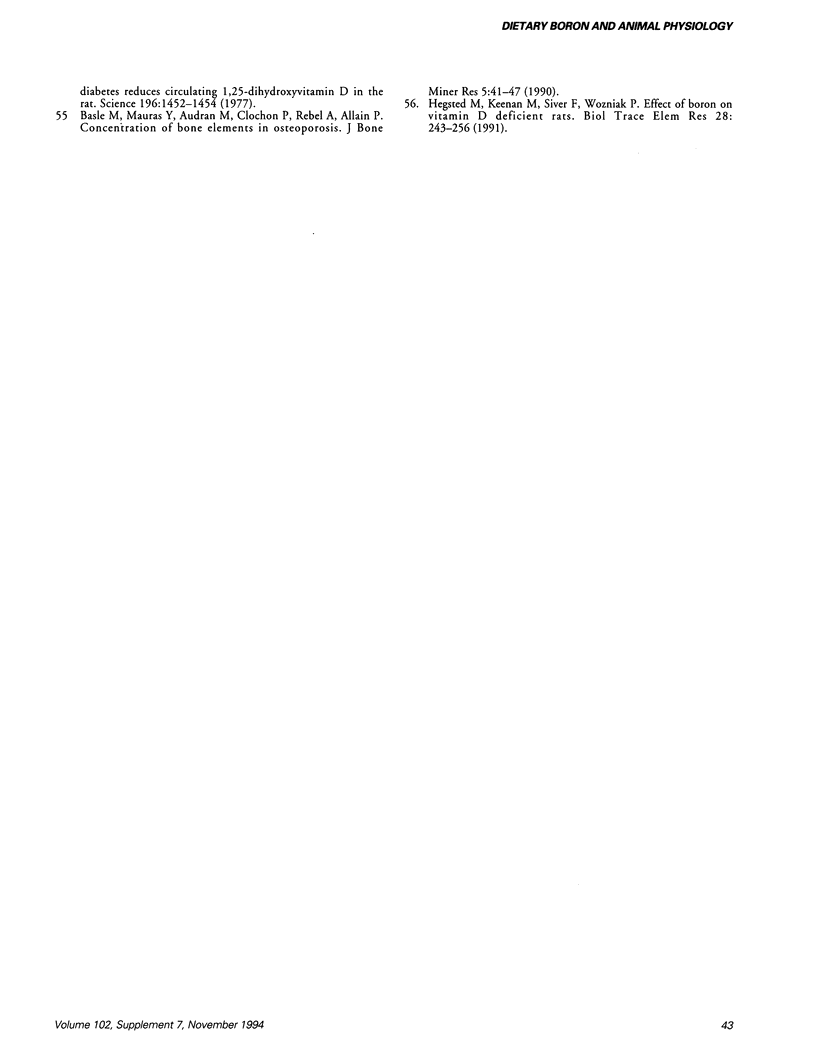
Selected References
These references are in PubMed. This may not be the complete list of references from this article.
- Auffermann W., Wagner S., Wu S., Buser P., Parmley W. W., Wikman-Coffelt J. Calcium inhibition of glycolysis contributes to ischaemic injury. Cardiovasc Res. 1990 Jun;24(6):510–520. doi: 10.1093/cvr/24.6.510. [DOI] [PubMed] [Google Scholar]
- Baslé M. F., Mauras Y., Audran M., Clochon P., Rebel A., Allain P. Concentration of bone elements in osteoporosis. J Bone Miner Res. 1990 Jan;5(1):41–47. doi: 10.1002/jbmr.5650050108. [DOI] [PubMed] [Google Scholar]
- Constantinides S. M., Deal W. C., Jr Reversible dissociation of tetrameric rabbit muscle glyceraldehyde 3-phosphate dehydrogenase into dimers or monomers by adenosine triphosphate. J Biol Chem. 1969 Oct 25;244(20):5695–5702. [PubMed] [Google Scholar]
- Davis W. L., Matthews J. L., Goodman D. B. Glyoxylate cycle in the rat liver: effect of vitamin D3 treatment. FASEB J. 1989 Mar;3(5):1651–1655. doi: 10.1096/fasebj.3.5.2537775. [DOI] [PubMed] [Google Scholar]
- DeLuca H. F., Schnoes H. K. Vitamin D: recent advances. Annu Rev Biochem. 1983;52:411–439. doi: 10.1146/annurev.bi.52.070183.002211. [DOI] [PubMed] [Google Scholar]
- Deal W. C., Jr Metabolic control and structure of glycolytic enzymes. IV. Nicotinamide-adenine dinucleotide dependent in vitro reversal of dissociation and possible in vivo control of yeast glyceraldehyde 3-phosphate dehydrogenase synthesis. Biochemistry. 1969 Jul;8(7):2795–2805. doi: 10.1021/bi00835a016. [DOI] [PubMed] [Google Scholar]
- Deitrich R. A. Diphosphopyridine nucleotide-linked aldehyde dehydrogenase. 3. Sulfhydryl characteristics of the enzyme. Arch Biochem Biophys. 1967 Mar;119(1):253–263. doi: 10.1016/0003-9861(67)90452-3. [DOI] [PubMed] [Google Scholar]
- Frankel B. J., Sehlin J., Täljedal I. B. Vitamin D3 stimulates calcium-45 uptake by isolated mouse islets in vitro. Acta Physiol Scand. 1985 Jan;123(1):61–66. doi: 10.1111/j.1748-1716.1985.tb07561.x. [DOI] [PubMed] [Google Scholar]
- Gedik O., Akalin S. Effects of vitamin D deficiency and repletion on insulin and glucagon secretion in man. Diabetologia. 1986 Mar;29(3):142–145. doi: 10.1007/BF02427083. [DOI] [PubMed] [Google Scholar]
- Hegsted M., Keenan M. J., Siver F., Wozniak P. Effect of boron on vitamin D deficient rats. Biol Trace Elem Res. 1991 Mar;28(3):243–255. doi: 10.1007/BF02990471. [DOI] [PubMed] [Google Scholar]
- Hunt C. D. Dietary boron modified the effects of magnesium and molybdenum on mineral metabolism in the cholecalciferol-deficient chick. Biol Trace Elem Res. 1989 Nov;22(2):201–220. doi: 10.1007/BF02916650. [DOI] [PubMed] [Google Scholar]
- Hunt C. D., Halas E. S., Eberhardt M. J. Long-term effects of lactational zinc deficiency on bone mineral composition in rats fed a commercially modified Luecke diet. Biol Trace Elem Res. 1988 Jul;16(2):97–113. doi: 10.1007/BF02797095. [DOI] [PubMed] [Google Scholar]
- Hunt C. D., Herbel J. L. Boron affects energy metabolism in the streptozotocin-injected, vitamin D3-deprived rat. Magnes Trace Elem. 1991;10(5-6):374–386. [PubMed] [Google Scholar]
- Hunt C. D., Herbel J. L. Effects of dietary boron on calcium and mineral metabolism in the streptozotocin-injected, vitamin D3-deprived rat. Magnes Trace Elem. 1991;10(5-6):387–408. [PubMed] [Google Scholar]
- Hunt C. D., Shuler T. R., Mullen L. M. Concentration of boron and other elements in human foods and personal-care products. J Am Diet Assoc. 1991 May;91(5):558–568. [PubMed] [Google Scholar]
- Johnson S. L., Smith K. W. The interaction of borate and sulfite with pyridine nucleotides. Biochemistry. 1976 Feb 10;15(3):553–559. doi: 10.1021/bi00648a015. [DOI] [PubMed] [Google Scholar]
- Kadowaki S., Norman A. W. Demonstration that the vitamin D metabolite 1,25(OH)2-vitamin D3 and not 24R,25(OH)2-vitamin D3 is essential for normal insulin secretion in the perfused rat pancreas. Diabetes. 1985 Apr;34(4):315–320. doi: 10.2337/diab.34.4.315. [DOI] [PubMed] [Google Scholar]
- Kakuta S., Golub E. E., Haselgrove J. C., Chance B., Frasca P., Shapiro I. M. Redox studies of the epiphyseal growth cartilage: pyridine nucleotide metabolism and the development of mineralization. J Bone Miner Res. 1986 Oct;1(5):433–440. doi: 10.1002/jbmr.5650010508. [DOI] [PubMed] [Google Scholar]
- Kettner C., Mersinger L., Knabb R. The selective inhibition of thrombin by peptides of boroarginine. J Biol Chem. 1990 Oct 25;265(30):18289–18297. [PubMed] [Google Scholar]
- King N., Odom T. W., Sampson H. W., Yersin A. G. The effect of in ovo boron supplementation on bone mineralization of the vitamin D-deficient chicken embryo. Biol Trace Elem Res. 1991 Dec;31(3):223–233. doi: 10.1007/BF02990193. [DOI] [PubMed] [Google Scholar]
- Lind L., Lithell H., Wengle B., Wrege U., Ljunghall S. A pilot study of metabolic effects of intravenously given alpha-calcidol in patients with chronic renal failure. Scand J Urol Nephrol. 1988;22(3):219–222. [PubMed] [Google Scholar]
- Lindquist R. N., Terry C. Inhibition of subtilisin by boronic acids, potential analogs of tetrahedral reaction intermediates. Arch Biochem Biophys. 1974 Jan;160(1):135–144. doi: 10.1016/s0003-9861(74)80018-4. [DOI] [PubMed] [Google Scholar]
- Loomis W. D., Durst R. W. Chemistry and biology of boron. Biofactors. 1992 Apr;3(4):229–239. [PubMed] [Google Scholar]
- Meyer W. L., Kunin A. S. The inductive effect of rickets on glycolytic enzymes of rat epiphyseal cartilage and its reversal by vitamin D and phosphate. Arch Biochem Biophys. 1969 Feb;129(2):438–446. doi: 10.1016/0003-9861(69)90200-8. [DOI] [PubMed] [Google Scholar]
- Norman A. W., Frankel J. B., Heldt A. M., Grodsky G. M. Vitamin D deficiency inhibits pancreatic secretion of insulin. Science. 1980 Aug 15;209(4458):823–825. doi: 10.1126/science.6250216. [DOI] [PubMed] [Google Scholar]
- Paterson C. R., Fourman P. Collagen synthesis and carbohydrate metabolism of rachitic bone. Biochem J. 1968 Aug;109(1):101–106. doi: 10.1042/bj1090101. [DOI] [PMC free article] [PubMed] [Google Scholar]
- ROUSH A., NORRIS E. R. The inhibition of xanthine oxidase by borates. Arch Biochem. 1950 Dec;29(2):344–347. [PubMed] [Google Scholar]
- STRITTMATTER P. REVERSIBLE DIRECT HYDROGEN TRANSFER FROM REDUCED PYRIDINE NUCLETODIES TO CYTOCHROME B5 REDUCTASE. J Biol Chem. 1964 Sep;239:3043–3050. [PubMed] [Google Scholar]
- Schneider L. E., Schedl H. P. Diabetes and intestinal calcium absorption in the rat. Am J Physiol. 1972 Dec;223(6):1319–1323. doi: 10.1152/ajplegacy.1972.223.6.1319. [DOI] [PubMed] [Google Scholar]
- Schneider L. E., Schedl H. P., McCain T., Haussler M. R. Experimental diabetes reduces circulating 1,25-dihydroxyvitamin D in the rat. Science. 1977 Jun 24;196(4297):1452–1454. doi: 10.1126/science.141098. [DOI] [PubMed] [Google Scholar]
- Shapiro I. M., Debolt K., Funanage V. L., Smith S. M., Tuan R. S. Developmental regulation of creatine kinase activity in cells of the epiphyseal growth cartilage. J Bone Miner Res. 1992 May;7(5):493–500. doi: 10.1002/jbmr.5650070505. [DOI] [PubMed] [Google Scholar]
- Shapiro I. M., Golub E. E., Chance B., Piddington C., Oshima O., Tuncay O. C., Frasca P., Haselgrove J. C. Linkage between energy status of perivascular cells and mineralization of the chick growth cartilage. Dev Biol. 1988 Oct;129(2):372–379. doi: 10.1016/0012-1606(88)90384-3. [DOI] [PubMed] [Google Scholar]
- Smith K. W., Johnson S. L. Borate inhibition of yeast alcohol dehydrogenase. Biochemistry. 1976 Feb 10;15(3):560–565. doi: 10.1021/bi00648a016. [DOI] [PubMed] [Google Scholar]
- Suzuki K., Hibino K., Imahori K. Hybridization of glyceraldehyde-3-phosphate dehydrogenase in borate. J Biochem. 1976 Jun;79(6):1287–1295. doi: 10.1093/oxfordjournals.jbchem.a131182. [DOI] [PubMed] [Google Scholar]
- Sömjen D., Weisman Y., Binderman I., Kaye A. M. Stimulation of creatine kinase BB activity by 1 alpha,25-dihydroxycholecalciferol and 24R,25-dihydroxycholecalciferol in rat tissues. Biochem J. 1984 May 1;219(3):1037–1041. doi: 10.1042/bj2191037. [DOI] [PMC free article] [PubMed] [Google Scholar]
- Walters M. R., Kollenkirchen U., Fox J. What is vitamin D deficiency? Proc Soc Exp Biol Med. 1992 Apr;199(4):385–393. doi: 10.3181/00379727-199-43371b. [DOI] [PubMed] [Google Scholar]
- ZITTLE C. A. Reaction of borate with substances of biological interest. Adv Enzymol Relat Subj Biochem. 1951;12:493–527. doi: 10.1002/9780470122570.ch9. [DOI] [PubMed] [Google Scholar]


